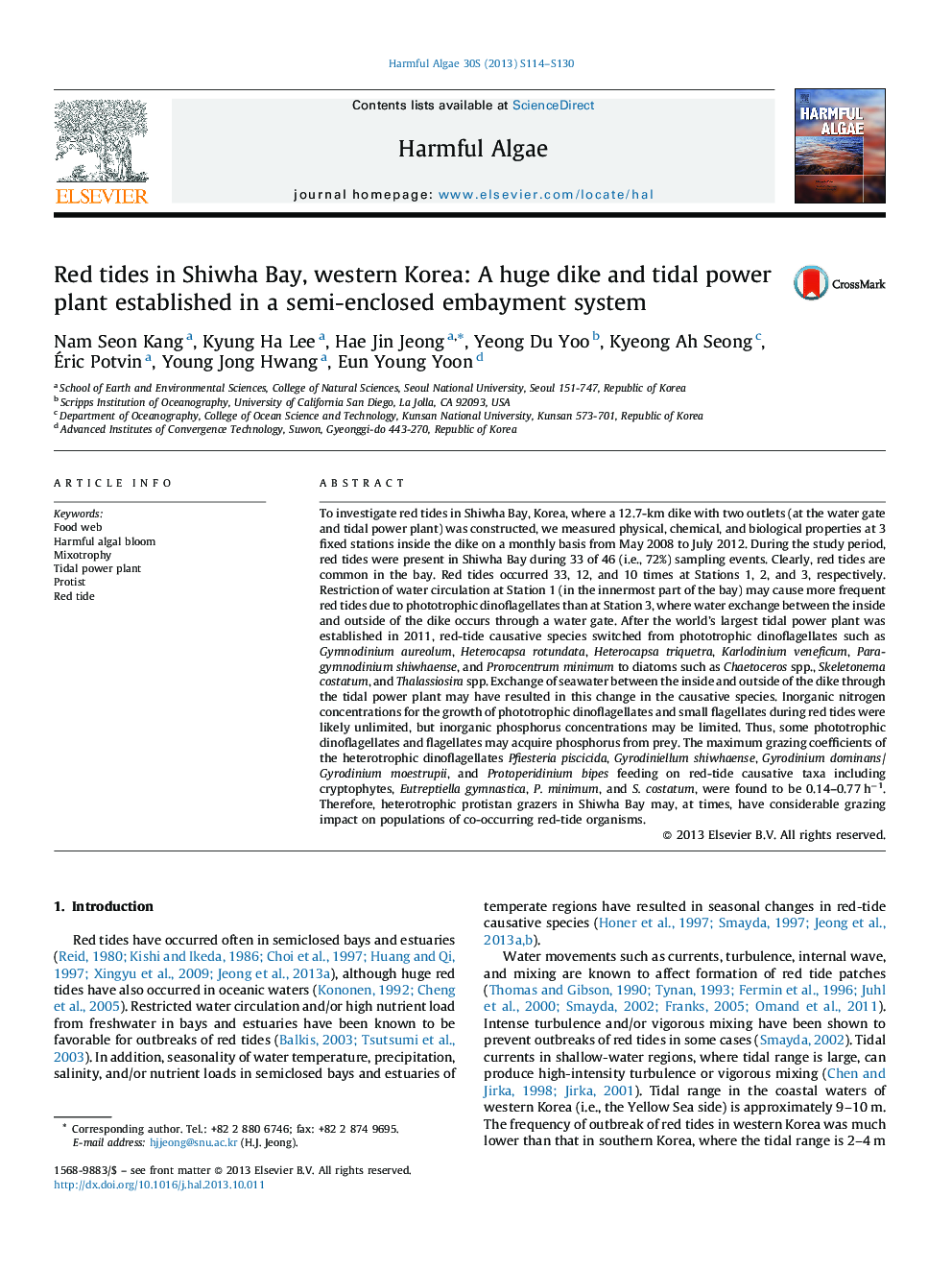| کد مقاله | کد نشریه | سال انتشار | مقاله انگلیسی | نسخه تمام متن |
|---|---|---|---|---|
| 4545429 | 1327446 | 2013 | 17 صفحه PDF | دانلود رایگان |

• Red tides in Shiwha Bay between 2008 and 2012 occurred in 33 of 46 (i.e., 72%) sampling events.
• The causative species switched from dinoflagellates to diatoms or cryptophytes after a huge tidal power plant was constructed.
• Inorganic N concentrations during red tides were higher than K1/2 values for the red-tide causative species.
• The protistan grazer exhibiting the highest grazing coefficient was different for almost every red-tide organism.
To investigate red tides in Shiwha Bay, Korea, where a 12.7-km dike with two outlets (at the water gate and tidal power plant) was constructed, we measured physical, chemical, and biological properties at 3 fixed stations inside the dike on a monthly basis from May 2008 to July 2012. During the study period, red tides were present in Shiwha Bay during 33 of 46 (i.e., 72%) sampling events. Clearly, red tides are common in the bay. Red tides occurred 33, 12, and 10 times at Stations 1, 2, and 3, respectively. Restriction of water circulation at Station 1 (in the innermost part of the bay) may cause more frequent red tides due to phototrophic dinoflagellates than at Station 3, where water exchange between the inside and outside of the dike occurs through a water gate. After the world's largest tidal power plant was established in 2011, red-tide causative species switched from phototrophic dinoflagellates such as Gymnodinium aureolum, Heterocapsa rotundata, Heterocapsa triquetra, Karlodinium veneficum, Paragymnodinium shiwhaense, and Prorocentrum minimum to diatoms such as Chaetoceros spp., Skeletonema costatum, and Thalassiosira spp. Exchange of seawater between the inside and outside of the dike through the tidal power plant may have resulted in this change in the causative species. Inorganic nitrogen concentrations for the growth of phototrophic dinoflagellates and small flagellates during red tides were likely unlimited, but inorganic phosphorus concentrations may be limited. Thus, some phototrophic dinoflagellates and flagellates may acquire phosphorus from prey. The maximum grazing coefficients of the heterotrophic dinoflagellates Pfiesteria piscicida, Gyrodiniellum shiwhaense, Gyrodinium dominans/Gyrodinium moestrupii, and Protoperidinium bipes feeding on red-tide causative taxa including cryptophytes, Eutreptiella gymnastica, P. minimum, and S. costatum, were found to be 0.14–0.77 h−1. Therefore, heterotrophic protistan grazers in Shiwha Bay may, at times, have considerable grazing impact on populations of co-occurring red-tide organisms.
Journal: Harmful Algae - Volume 30, Supplement 1, December 2013, Pages S114–S130